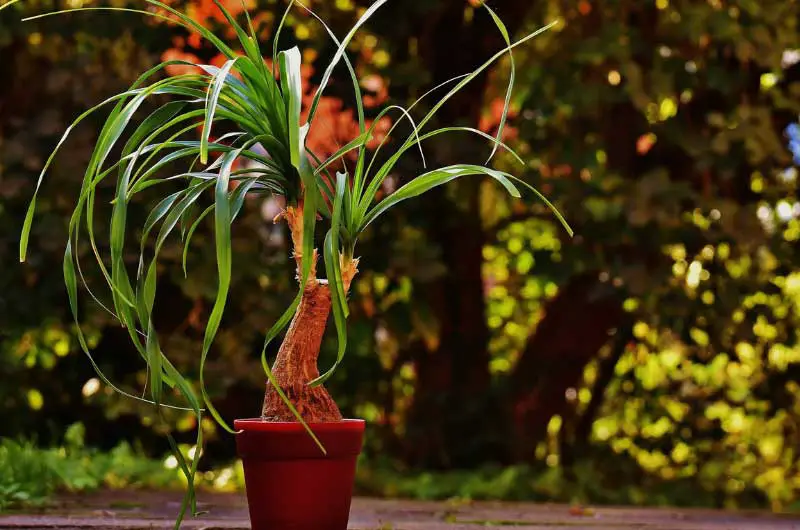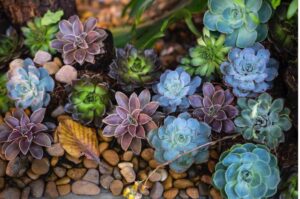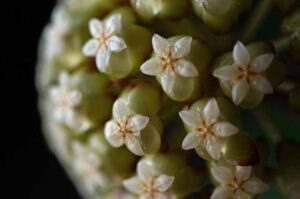Why Is My Ponytail Palm Trunk Soft, And How To Prevent It?
Ponytail palms are gorgeous succulents having a tree-like appearance. it may be surprising to some but they actually aren’t palms at all. Its unique and oversized trunk resembles an elephant’s foot, making it popular among plant lovers. The trunk stores excess water that it can use at water scarcity.
However, if you overwater your Ponytail palm, its trunks absorb excess water and become soft. Over time the trunk starts rotting, and if not noticed, the plant may even die. But the good news is you can still prevent the softening of Ponytail palm trunks by avoiding overwatering.
Allow the trunk to dry out properly between watering intervals so that it does not absorb excess water. Additionally, check for the soil; if the soil is clayey, it would again hold lots of water, causing waterlogging and eventually leading to root rot. Also, ensure proper drainage through the pots.

Why is your ponytail palm trunk turning soft?
Whenever your Ponytail palm develops a soft trunk, it’s mainly due to water issues:
- You are watering the plant excessively, causing waterlogging
- You are using poor quality soil that is holding too much water
- Poor pot drainage keeps the soil wet for a longer duration.
If you notice your Ponytail palm’s trunk turning soft, the potting soil must dry out immediately. And depending upon how wet it has been, you may even need to repot your plant. So the first step is to examine the roots to check for root rot.
Also, check if there are any brown spots on the leaves or if the leaf tips are brown and mushy. If you observe any of these, the roots have started rotting. Now there are two possibilities.
How to know if your ponytail palm has rotten roots?
It’s easy to detect if the plant has root rot. First, look at the roots and the stems just above the roots. If they are brown and the roots are mushy, root rot affects your plant.
Overwatering signs of the Ponytail palm
- Leaves turning brown
- Drooping of the leaves
- Trunk becoming soft
Consequences of a soft ponytail palm trunk
There are two consequences of a soft Ponytail palm trunk; either the roots are completely rotten or there are a few rotten roots. Now you may wonder what to do in either of the two cases. Do not fret we have come up with a solution:
1. If the roots are entirely rotten
Gently lift the Ponytail palm from its pot and check if the roots and trunk are completely rotted or if there’s still some hope. If all the roots are rotted, it’s too late, and the rot will rapidly spread to the entire plant and cause it to die. It’s best to throw the plant in such a case because there is nothing you can do about it.
2. If there are only a few rotten roots
However, if you observe only a few rotten roots, your plant can still survive. Follow the steps mentioned here to save your plant:
Steps to follow if you notice a soft trunk?
Now you know the two consequences of overwatering your palm i.e. there is a maximum possibility of root rot either full or partial. Here is a stepwise procedure to save your palm tree:
- Cutoff unhealthy roots
Remove any roots that look questionable and discolored. Leave behind only the healthy roots.
- Rinse the healthy roots
Once you have removed all the rotten roots, rinse the healthy roots thoroughly with lukewarm water. It will help remove all the harmful bacteria from the roots.
- Let them air dry
The next step is to air dry the healthy roots of the Ponytail palm for at least 24 hours. It will kill off all the harmful bacteria. And if you notice the roots becoming too dry, wrap them in a damp paper towel to retain the moisture.
- Repot your Ponytail palm in a right-sized pot
After air-drying the roots for 24 hours, now is the turn for repotting your Ponytail palm. And if the roots look compact and entangled, you can loosen them with your fingers before planting them into the soil. The most crucial step is to choose an appropriate size for the pot.
If your Ponytail palm is not root-bound, you can take the same pot, but if it’s root-bound, you’ll have to take a big and deeper pot with adequate drainage.
- Use the correct type of soil
Your Ponytail palm needs soil that is airy and allows proper drainage. The ideal soil mixture for palms looks like two parts of succulent soil and one part of perlite. Perlite enhances soil drainage and prevents the trunk from absorbing excessive water.
- Plant your Ponytail at the correct height
The next step is to fill the pot with soil mixture, ensuring that the drainage hole doesn’t get clogged. You can cover the hole with a curved side of a stone to avoid blockage of the drainage hole. Now put some soil in the pot, gently place your Ponytail palm into the soil, and fill the pot with soil.
Place it at a proper height, not too deep nor on the surface. Once you place it at proper levels, cover it with the soil and let the plant settle.
- Water the plant adequately.
Once you have adjusted the plant at a suitable height, water it adequately til the water seeps out of the drainage hole, before you water your plant the next time, ensure that the two Inches of the soil are dry.
Are your roots healthy?
If luckily, you observe all the roots healthy, you have caught the overwatering issue quite fast. In such a case, check the soil if it’s not too wet and if the pot has enough holes for drainage, gently place the plant back in its pot. Avoid watering till the roots become completely dry.
Can you prevent the trunk from turning soft?
As already stated, Ponytail palms are not very demanding. You just have to be careful about their watering needs. By doing so you can effortlessly prevent your palms trunk from getting soft. Keep in mind the below mentioned 4 steps for a healthy plant:
1. Avoid overwatering
Ponytail palms do not like being watered regularly, so don’t water them frequently. However, even if you see the dry pot, don’t fret because the trunk stores water and distributes it to its foliage whenever required. So allow the soil to dry completely between the consecutive watering period.
Also, before watering, touch the top couple of inches with your finger. Then, if you feel the soil moist, you can delay the watering for another one-two day. Additionally, you can also use a moisture meter for recording soil moisture.
2. Avoid watering over the palm’s trunk.
Be cautious while watering your Ponytail palm. Do not pour the water over the trunk. It’s the same as someone splashing water on your face. Similarly, your plant dislikes water pouring on its trunk. Also, it can lead to water buildup around the plant’s base leading to the rotting of the roots near the surface.
3. Use good quality, fast-draining soil.
For a Ponytail palm to prosper, you need a fast-draining soil mix, similar to the one used for succulents. If you plant them in clayey soil that doesn’t allow much drainage, the trunk will store a lot of moisture. Eventually, the trunk will become soft.
4. Ensure proper drainage through the pots
The pot also should allow proper drainage so that excess water drains out and the roots get a chance to dry out. If the pot is holding backwater, the trunks get a chance to sit in the water for a longer time. As a result, it becomes soft and eventually begins to rot.
Other common issues of ponytail palm
Besides soft trunks, there are a few more issues to take care of if you own a Ponytail palm. For example:
- Nutrient deficiency
If your plant is not getting enough nitrogen or magnesium, the leaves start turning yellow. It indicates the need for slow-release fertilizers. Feed your plants with fertilizer and let the plant recover. Wait for a month or two to see favorable results.
- Frost damage
Ponytail palms get severely damaged in winters if you don’t take care of them. The leaves turn black/brown, the stem seems mushy and the roots start rotting t in a top to bottom fashion. It all happens because the plant’s tissues rupture due to the formation of ice crystals during the freezing season.
- Pest infestation
Mealybugs are a common pest for Ponytail palms. They leave a fluffy white fuzz on the palm indicating their presence. You can get rid of them by spraying isopropyl alcohol(70%) on the infected part. Alternatively, you can use a solution of 5 ml of soap dissolved in 1 liter of water and spray the plant with the solution.
- Trunk shrinking
As mentioned above, the trunk stores excessive water to use when required. But sometimes you forget to water your Ponytail palm for a longer period. Thus the trunk utilizes the stored water to meet the water requirement which causes it to shrink. Therefore it is essential to keep an eye on your watering cycle to save the plant from unnecessary stress.
Conclusion
Ponytail palms are easy to care for plants only if you remember that less is more in terms of watering them. With that said, it must be clear now why your Ponytail palm may have a soft trunk and how you can prevent it. Be consistent in checking the roots of your palm for root rot, and be patient not to water them too frequently. Your Ponytail palm will prosper if you take all the aforementioned preventive measures.






